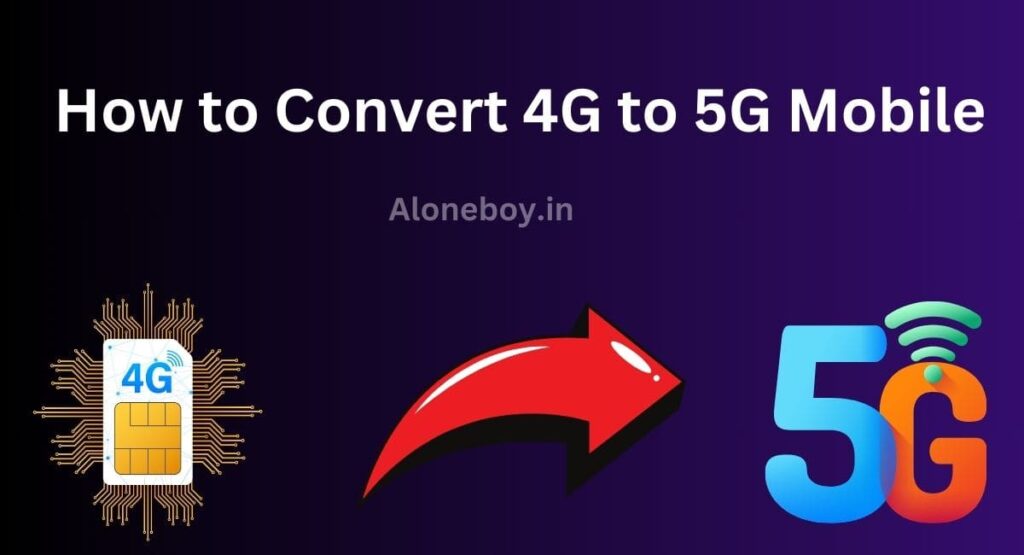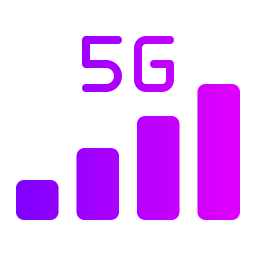The transition from 4G to 5G is one of the most significant advancements in mobile technology. With 5G offering faster speeds, lower latency, and more reliable connections, many users are eager to upgrade their mobile experience.

If you’re looking to convert your 4G mobile to 5G, this guide provides a detailed step-by-step process to help you make the switch seamlessly.
Understanding 5G Technology
Before diving into the steps to activate 5G, it’s essential to understand what 5G technology offers:
1. Speed: 5G networks promise significantly faster download and upload speeds compared to 4G. This means quicker browsing, streaming, and downloading.
2. Latency: 5G reduces latency, which is the time it takes for data to travel from the source to the destination. Lower latency improves real-time applications like gaming and video calls.
3. Capacity: 5G networks can handle more devices simultaneously, reducing congestion and improving performance in crowded areas.
4. Reliability: Enhanced network reliability ensures a more stable connection, even in challenging environments.
Steps to Convert 4G to 5G Mobile
Converting your 4G mobile to 5G involves several steps, including checking device compatibility, updating settings, and ensuring network availability. Here’s a comprehensive guide to help you through the process:
4G To 5G Activate

Check Device Compatibility
Verify Device Specifications
Not all devices are compatible with 5G networks. Before making any changes, check if your mobile device supports 5G. You can do this by:
- Checking the Device’s Specifications: Look up your device’s model specifications on the manufacturer’s website or in the user manual.
- Consulting the Mobile Carrier: Contact your mobile carrier to confirm if your device is 5G compatible.
Update Device Firmware
Ensure your device’s firmware is up to date. Manufacturers often release updates that include enhancements and support for new network technologies.
- Check for Updates: Go to your device’s settings and look for software updates.
- Install Updates: Follow the prompts to download and install any available updates.
Obtain a 5G-Enabled SIM Card
Contact Your Mobile Carrier
If your device is 5G compatible, the next step is to obtain a 5G-enabled SIM card. Contact your mobile carrier to request a 5G SIM card.
- Visit a Carrier Store: You can visit a physical store to get a new SIM card.
- Request Online: Some carriers allow you to request a SIM card online and have it delivered to your address.
Insert the 5G SIM Card
Once you have the 5G SIM card:
- Power Off Your Device: Turn off your mobile device before inserting the SIM card.
- Replace the SIM Card: Open the SIM card tray and replace the existing 4G SIM card with the new 5G SIM card.
- Power On Your Device: Turn your device back on and wait for it to connect to the 5G network.
Activate 5G Network
Check Network Settings
To activate 5G, you may need to adjust your network settings. Follow these steps:
- Open Settings: Go to your device’s settings menu.
- Select Network & Internet: Find the section related to mobile networks.
- Choose Network Mode: Set the network mode to 5G. You may see options like “5G/4G/3G/2G Auto” or “5G Only.” Choose the one that best fits your needs.
Enable 5G
Ensure that 5G is enabled on your device:
- Open Network Settings: Navigate to the mobile network settings in your device.
- Select 5G Network: Enable the 5G network option if it’s not already activated.
Test 5G Connectivity
Verify Connection
After enabling 5G, check if your device is connected to a 5G network:
- Check Status Bar: Look for the 5G icon in the status bar of your device. This indicates that your device is connected to a 5G network.
- Test Speed: Use speed testing apps to measure the speed and performance of your 5G connection.
Troubleshoot Issues
If you’re not getting a 5G connection, try the following troubleshooting steps:
- Restart Your Device: Sometimes, a simple restart can resolve connectivity issues.
- Check Coverage: Ensure you’re in an area with 5G coverage. 5G networks are still being rolled out, so coverage may be limited in some regions.
- Contact Support: Reach out to your mobile carrier’s customer support for assistance if the issue persists.
Optimize Your 5G Experience
Update Apps
Ensure that your apps are up to date to take advantage of 5G speeds. Developers often release updates that optimize apps for new network technologies.
- Go to App Store: Visit your device’s app store and check for updates.
- Install Updates: Download and install the latest versions of your apps.
Manage Data Usage
5G offers faster speeds, which can lead to increased data usage. Monitor your data usage to avoid unexpected charges.
- Check Data Usage: Go to your device’s settings and review your data usage.
- Set Limits: Many devices allow you to set data usage limits or alerts to manage your consumption.
Use 5G-Optimized Services
Take advantage of services and applications optimized for 5G, such as:
- Streaming Services: Enjoy higher-quality streaming with reduced buffering.
- Gaming: Experience lower latency and smoother gameplay.
- Cloud Services: Benefit from faster uploads and downloads with cloud-based applications.
Addressing Common Questions
Is 5G Available Everywhere?
5G networks are still being rolled out globally, so availability may vary depending on your location. Check with your mobile carrier for information on 5G coverage in your area.
Do I Need a New Device for 5G?
Yes, you need a 5G-compatible device to access 5G networks. If your current device is not compatible, you may need to upgrade to a new one.
Will 5G Work with My Existing Plan?
5G compatibility may depend on your mobile plan. Contact your mobile carrier to confirm if your existing plan supports 5G or if you need to switch to a different plan.
Conclusion
Converting from 4G to 5G involves checking device compatibility, obtaining a 5G-enabled SIM card, adjusting network settings, and optimizing your 5G experience. By following these steps, you can seamlessly transition to 5G and enjoy the benefits of faster speeds, lower latency, and enhanced connectivity.
Stay informed about 5G coverage in your area, keep your device and apps updated, and manage your data usage to make the most of your 5G experience. If you encounter any issues, don’t hesitate to reach out to your mobile carrier for support. With these tips and insights, you’re well on your way to fully experiencing the power of 5G technology.